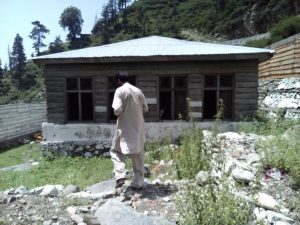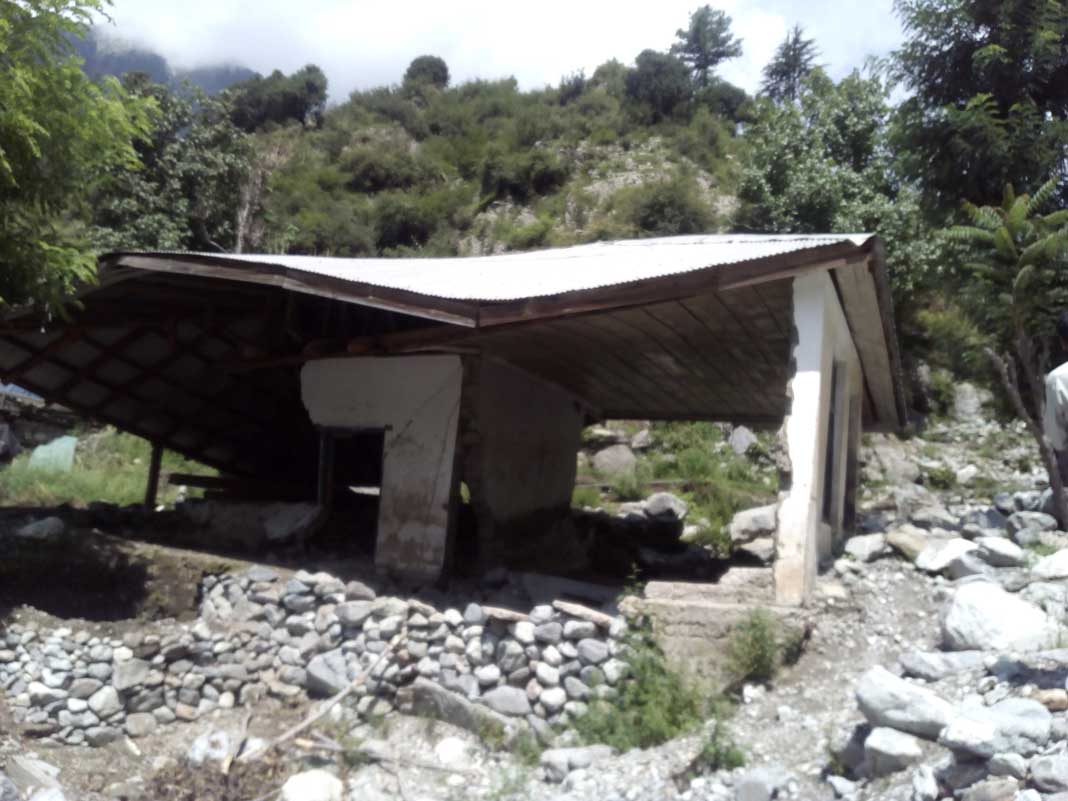Peshawar: Ghost government ghost schools remain a common occurrence in the remote district of Kohistan in the Khyber Pakhtunkwa province despite the provincial government’s claims of education reforms, says a local non-government organisation working on education in the district.
According to the Kohistan Development Association (KDA), there are 42 ghost government primary schools in Upper and Lower Kohistan districts. Of these, 39 are girls’ schools.



Chairman KDA, Hafeez ur Rehman says the staff members of these schools were regularly drawing salaries without turning up for their duties.
“Contrary to tall claims of government of introducing revolutionary reforms in the education sector, there is complete chaos when it comes to education in both districts,” Rehman told News Lens on phone from Kohistan. “Even buildings of schools somehow functional are either partially or completely destroyed in different natural disasters or lack of maintenance and lack basic facilities.”
District education rankings by government and different NGOs indicate that Upper and Lower Kohistan are the most backward of all 26 districts of Khyber Pakhtunkhwa. The education sector also suffers, especially girls’ education. According to Pakistan Social and Living Standards Measurement (PSLM) for 2014-15, 60 per cent of children aged between 5-16 are out of school in Kohistan. Among these 18 per cent are boys while 82 per cent are girls.
Rehman said that the literacy rate for children aged 10 and above is 42 per cent in case of boys while for girls it is only 5 per cent.
KDA data reveals that there are 928 schools in Upper and Lower Kohistan of which 655 are for boys and only 273 for girls.
Rehman said that the small number of schools was the main reason for the lowest literacy rate among the female population in all districts of KP. Another reason, he said, for low literacy and education standard in both districts of Kohistan was the shortage of basic facilities at schools, remote or difficult to access schools and absence of teachers from schools.
He said that even officials like the District Education Officers (DEO’s) in parts of Kohistan didn’t bother to come their office most days of the week.
The provincial government launched the Independent Monitoring Unit (IMU) in 2014 to improve and ensure teachers’ attendance at schools throughout the province. The IMU officials make visits to remote areas to collect and physically verify data on attendance of teachers and enrollment and dropout of students.
Muhammad Ali, one of the two teachers at a primary school in Upper Kohistan, confirmed the frequent absence of teachers and other officials from their duties at schools.
“The teachers and officials dodge the Independent Monitoring Unit officials as they always get ‘mysteriously’ tipped-off about the impending visit of IMU officials and turn up at schools to confirm their attendance,” said Ali.
Sajmal Yooddon, a journalist from the Kandia area of Upper Kohistan confirmed that absence of teachers and education officials from duties was a common problem in the two districts.
“There are a number of ghost schools locally whereas those functional are in bad condition which deter the locals from sending children, especially girls, to schools,” he said.
Yoodon said lack of local government in both districts was why the education sector was in a bad shape.
Both Upper and Lower Kohistan were part of the Hazara division as a single district (Kohistan) until 2014. The Pakistan Tehreek Insaf-led provincial government decided to bifurcate it into Upper Kohistan and Lower Kohistan, after which the total number of districts in the province has gone up to 26.
Both Upper and Lower Kohistan, unlike other districts of KP, couldn’t get a local government in 2015 as the Kohistan district bifurcation case was still pending before the Peshawar High Court during the local government elections.
Since then, development funds amounting to Rs 829 million allocated to Kohistan year after years since local governments came into play in Khyber Pakhtunkhwa have gone unspent due to the absence of one there, the Provincial Finance Commission (PFC) statistics suggest.
While billions of rupees are being spent on development activities under the local government in other districts of KP, the fate of the two districts from every aspect, including education, remains the same, says Yoodon.
Pakistan District Education Rankings released by Alif Ailaan, an NGO working in the education sector, in 2013, 2014 and 2015 indicate that there has been no visible improvement in the education indicators in Kohistan.
Among 142 districts/agencies of Pakistan, Kohistan is ranked at 135, 136, and 133 respectively from 2013 to 2015. Alif Ailaan indicators and rankings are based on access of education, retention, learning, gender parity and availability of school infrastructure
The relevant officials at the provincial Education Department, however, remain buoyant about the education situation in the area
“The data of NGO[s] regarding ghost schools is totally misleading and fallacious as there is not a single such schools in the districts of Upper and Lower Kohistan,” claimed Rafiq Khattak, Director at Elementary and Secondary Education Department (E&SED)
He said that government was spending billions on building new schools, provision of basic facilities and ensuring attendance of teachers in schools
Khattak claimed that there were some schools which lacked basic facilities but this would be addressed by the end of this year as work on provision of facilities was swiftly moving forward.
Shabbir Hussain Shah, DEO (female education) in Upper Kohistan also dismissed the allegations of absence of officials from their duties and existence of ghost schools in the area.
While government officials draw an optimistic picture of the situation, education activists like Hafeez ur Rahman remains dismal.
“Government claims to have brought revolutionary reforms in the education sector by spending billions of rupees but the impact is nowhere to be seen, not at least in these two districts,” he said.



